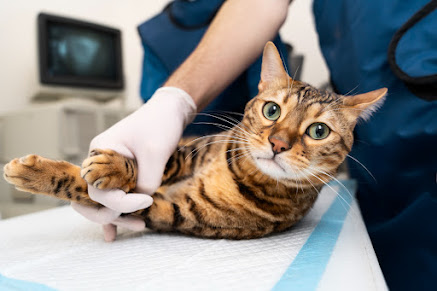The Gouldian Finch: A Colorful Jewel of the Avian World
With its vibrant plumage and captivating beauty, the Gouldian Finch (Erythrura gouldiae) has captured the hearts of bird enthusiasts around the world. Native to the grasslands and savannas of northern Australia, this small passerine bird is celebrated for its dazzling array of colors and its fascinating social behavior. In this article, we will explore the captivating world of the Gouldian Finch, shedding light on its distinctive characteristics, conservation status, and the efforts being made to protect this avian gem.
Appearance and Color Variations
The Gouldian Finch is renowned for its spectacular plumage, which distinguishes it as one of the most colorful finch species on the planet. Adult Gouldian Finches have three distinct color variations: red-headed, black-headed, and yellow-headed. These variations are further divided into two distinct body colorations: green and yellow. The combination of these colors creates a striking visual display that is truly mesmerizing.
The head coloration of the Gouldian Finch depends on its sex and age. Adult males exhibit a vibrant coloration with a distinct color band across their chest. The intensity of the colors indicates the bird's overall health and vitality, making it a critical factor in mate selection. In contrast, females and immature males possess a more subdued appearance, characterized by a grey head and less saturated body colors.
Social Behavior and Mating
Gouldian Finches are highly social birds that form strong pair bonds during the breeding season. These birds are known for their cooperative breeding behavior, where multiple adults, often close relatives, assist in raising the young. This cooperative breeding system allows for shared parental responsibilities, ensuring the survival and well-being of the offspring.
During courtship, the males display elaborate and enchanting behaviors to attract a mate. They perform intricate dances, fluff their feathers, and sing melodious songs to impress females. The courtship rituals often involve the males offering nesting materials to the females as a sign of their commitment. Once a pair bond is formed, the birds engage in nest-building activities, with the female taking the lead in constructing a well-hidden nest in tree hollows or crevices.
Conservation Challenges
Despite their captivating beauty, Gouldian Finches face numerous threats to their survival in the wild. Habitat loss due to land clearing, wildfires, and changes in land management practices is a significant challenge for these birds. The destruction of grasslands and savannas disrupts their nesting sites and reduces the availability of food resources. Additionally, the introduction of feral predators, such as cats and foxes, poses a grave danger to the vulnerable eggs and chicks.
Another significant factor contributing to the decline of the Gouldian Finch is the impact of diseases, particularly the parasitic air sac mite. This mite infestation affects the respiratory system of the birds, leading to their decline in numbers. The susceptibility of the Gouldian Finch to this disease is further exacerbated by the stress caused by habitat loss and other environmental pressures.
Conservation Efforts
Recognizing the urgent need to protect this iconic species, conservation organizations, researchers, and government agencies have initiated several initiatives to safeguard the future of the Gouldian Finch. These efforts focus on habitat restoration, predator control, captive breeding programs, and public awareness campaigns.
Habitat conservation projects aim to preserve and restore the grasslands and savannas that serve as critical breeding and foraging grounds for the Gouldian Finch. This involves working with landowners, implementing sustainable land management practices, and conducting research on the bird's habitat requirements.
Captive breeding programs have proven to be instrumental in maintaining genetic diversity and providing a safety net against extinction. Conservation centers and dedicated breeders have successfully established captive populations, allowing for reintroduction into suitable habitats when conditions are favorable.
Public awareness campaigns play a crucial role in educating the public about the plight of the Gouldian Finch and the importance of conservation efforts. By raising awareness and promoting responsible pet ownership, these campaigns contribute to the reduction of illegal trapping and trading of these birds.
Conclusion
The Gouldian Finch stands as a shining example of the incredible diversity and beauty found in the avian world. Its breathtaking colors and fascinating social behavior have captivated bird enthusiasts and researchers alike. However, this remarkable species faces numerous challenges, including habitat loss, predators, and diseases. Through dedicated conservation efforts, we can strive to protect the Gouldian Finch and ensure that future generations have the opportunity to marvel at its beauty. By preserving their natural habitats, controlling threats, and fostering public awareness, we can secure a brighter future for this jewel of the avian world.






